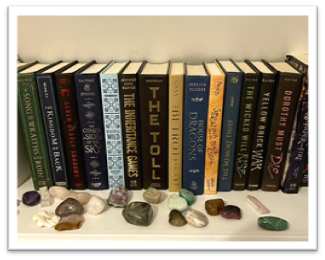The Anxious Expressionist
May 12, 2022
Expressionism is an artistic movement categorized in the Modern art category. It began in northern Europe in the beginning years of the 20th century and strived to evoke and portray intense emotional thoughts and feelings. Many artists have emerged during this movement, but one Norwegian printmaker and painter was a leading individual. His name was Edvard Munch and he create artworks consisting of perturbing images, developing from his interest in Symbolism. Most of his works reflect his psychological issues and debilitating thoughts. His constant anxiety about his health and death impacted his life tremendously. Munch was born in Ådalsbruk, Norway in 1863. His father was an army doctor, assisting in those wounded and affected with sickness during wartime. Shortly after he was born, the Munch family moved to Kristiania, Norway, currently Oslo. In 1868, when he was five years old, Munch’s mother passed away from tuberculosis. His education was severely affected, as he had to leave school due to illness. When Munch turned 15, Sophie, his sister also passed away from tuberculosis. Initially, he decided to focus his academics on engineering but later decided that painting was his true calling. Munch painted self-portraits from the age of 18 to 80, which also serve as a record for his rapidly changing emotions, mental health, and age. Similarly, with his other paintings, most of his self-portraits feature bold colors and an aura of mystery. His style contained illustrations of the busy world mixed with his personal emotionally sensitive visions, in a way that Vincent van Gogh had done prior. In 1883, he artistically practiced in the studio of Frits Thaulow, a successful painter. Shortly after, Munch’s painters were shown in the Autumn Exhibition in Kristiania. Around 1885-1886, Munch showed his work in the Norwegian area of the Paris World’s Fair and decided to stay and study art in Paris. In 1889, his art became recognized, and he held his first one-man art exhibition. Throughout the next few years, he traveled around multiple countries, including Belgium, France, Germany, and Denmark. The most renowned painting done by Munch is The Scream, painted in 1893. During this period of his life, Munch’s anxiety was extremely severe and hard to maintain. His inner, tortured thoughts and emotions are enclosed within this piece. Munch stated what his inspiration was for The Scream: “I was walking along the road with two friends- the sun was setting- suddenly the sky turned blood red- I paused, feeling exhausted, and leaned on the fence- there was blood and tongues of fire above the blue-black fjord and
the city- my friends walked on, and I stood there trembling with anxiety- and I sensed an infinite scream passing through nature.” In 1894, he constructed his first prints. Throughout the next several years, Munch’s paintings were presented in Denmark, Germany, Norway, and France. His first colored woodcut and lithograph are created in 1896. Munch decided to travel across Europe around 1901. Constantly obsessed and anxious about his health, he spent time in several health spas in Germany. The remaining decades of Munch’s life were spent alone in Oslo, where he created works consisting of bright tones. It is believed that his mental health and positivity were increased through the therapy received in response to his growing anxiety. He also accepted that his paintings gained some popularity in Norway. When he passed away in 1944, Munch left around 20,000 works to the town of Oslo, Norway. Many of these are on view at the Munch Museum. Between his expressive abilities and emotional story, Munch’s work holds an immense amount of significance in the development of art history.






